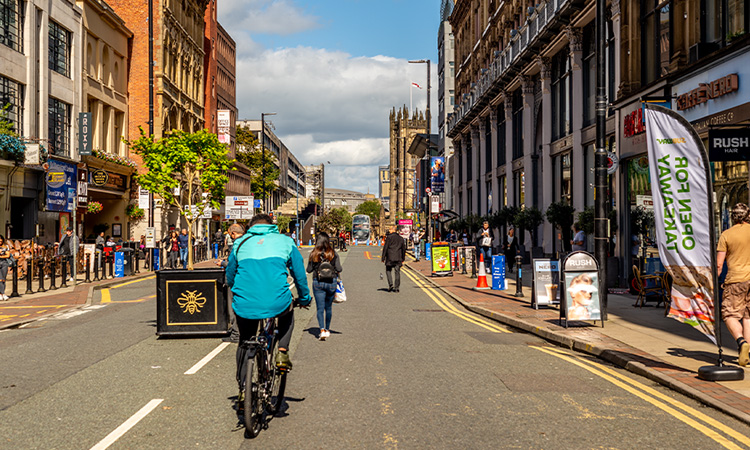Manchester unveils plans for safer pedestrian and cyclist environment
- Like
- Digg
- Del
- Tumblr
- VKontakte
- Buffer
- Love This
- Odnoklassniki
- Meneame
- Blogger
- Amazon
- Yahoo Mail
- Gmail
- AOL
- Newsvine
- HackerNews
- Evernote
- MySpace
- Mail.ru
- Viadeo
- Line
- Comments
- Yummly
- SMS
- Viber
- Telegram
- Subscribe
- Skype
- Facebook Messenger
- Kakao
- LiveJournal
- Yammer
- Edgar
- Fintel
- Mix
- Instapaper
- Copy Link
Posted: 1 June 2023 | Intelligent Transport | No comments yet
Supported by the UK government’s Active Travel Fund, the latest developments in Manchester city centre focus on enhancing safety for pedestrians and cyclists, with plans for improved road networks and sustainable drainage.


Credit: Manchester City Council
Manchester City Council has unveiled the final plans for enhancing the safety of pedestrians and cyclists in Manchester city centre. The City Centre Transport Strategy (CCTS) outlines the goal of having 90% of peak morning trips to the city centre made by foot, bike, or public transport by 2040. Following a thorough consultation in 2022, the proposed improvements to the road network within the city centre have been finalised, and the work is scheduled to commence in summer 2023.
The planned changes include several key elements. Firstly, a CYCLOPS junction will be established at the intersection of Peter Street and Quay Street. In addition, bus stops will be integrated with cycle lanes, enabling cyclists to safely pass buses that are loading or unloading passengers. Sustainable drainage measures in the form of shrubs and rain gardens will be implemented on Whitworth Street West, Old Deansgate and Chester Road.
Furthermore, modifications will be made to the Great Jackson Street and Chester Road junction, including widening the radius of the junction to naturally slow down vehicles and adding a zebra crossing and Belisha beacon. Bus stops will be re-located to more optimal locations, and additional disabled parking bays will be provided to improve accessibility on Deansgate. A comprehensive list of all the works planned as part of the Active Travel Fund (ATF) City Centre Scheme can be found on the council’s website.
The funding for these projects has been secured through the Active Travel Fund, a government initiative aimed at supporting local councils in creating safer and more convenient travel routes for the public. The CCTS aims to achieve several objectives, such as encouraging more people to walk and cycle in the city centre, establishing interconnected walking and cycling paths, reducing traffic congestion in line with the CCTS 2040 vision, minimising the risk of road accidents, and delivering numerous health, environmental and congestion-related benefits.
If you liked this, you may also be interested in:
▶ Liverpool secures £16 million funding to advance active travel schemes
Related topics
Active travel, Infrastructure & Urban Planning, Passenger Experience, Sustainable Urban Transport
Related modes
Bikes & Scooters
Related cities
Manchester
Related countries
United Kingdom
Related organisations
Manchester City Council, UK Government







